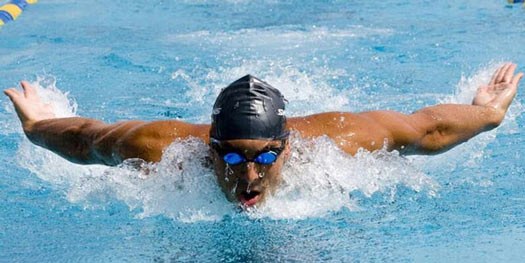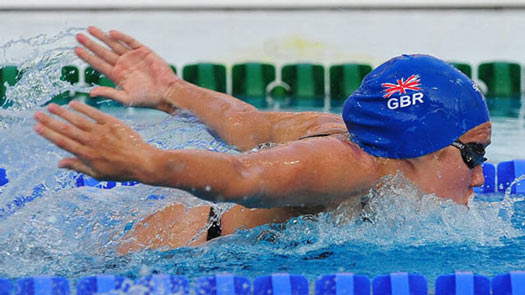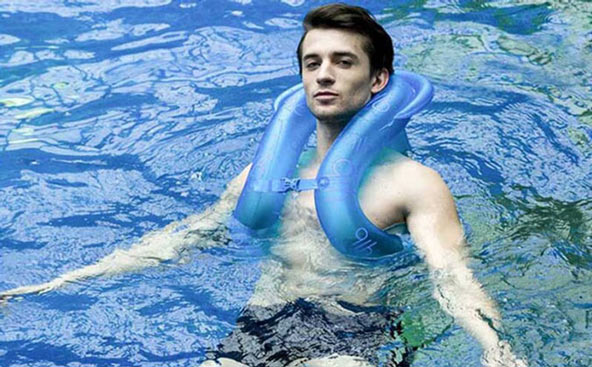Your Guide to Start Swimming Regularly
Dec 18, 2023 By Nancy Miller
Not only is swimming a recreational activity, but it also serves as a holistic exercise engaging every muscle in one's body. A novice or someone returning to the sport after a hiatus can begin reaping an array of health benefits by starting regular swim workouts. This article serves as your comprehensive guide, from enhancing cardiovascular fitness to improving flexibility, unlocking the full potential of aquatic exercises is our aim here.

Embarking on Your Aquatic Fitness Journey
Dipping your toes into the expansive realm of fitness, you must approach swimming with a precise mindset. Comprehending the basics is paramount. This guarantees not only an enjoyable process but also yields maximum rewards, instrumental for a smooth initiation.
Choosing the Right Swim Gear
Equip yourself with the right gear before diving in. A well-fitted swimsuit, swim cap, and goggles are essential. The appropriate equipment enhances not only your swimming experience but also contributes to superior performance in water activities.
Swimsuit: Choose a swimsuit that affords freedom of movement. Opt for a style, one in which you are comfortable, and ensure it provides the required support.
Swim Cap: Your face remains free from hair, drag decreases and pool cleanliness stays intact when you wear a swim cap. Popular choices include caps made of silicone or latex.
Goggles: Select a high-quality pair of goggles. This will not only shield your eyes from chlorine but also enhance clear vision beneath the water's surface, a dual purpose that should never be undervalued. Strive for comfort in your choice. It is paramount to ensure there is no leakage.
Understanding Water Exercise Basics
Familiarize yourself with the fundamental concepts of exercising in water before you dive into specific swimming workouts. Every movement becomes more challenging and rewarding due to the resistance that water offers. Moreover, its buoyancy reduces the impact on joints, an ideal choice for individuals grappling with joint issues.
Buoyancy: Engage in low-impact exercises, and exploit the benefits of buoyancy. Your body experiences reduced stress on joints and muscles, thanks to its inherent support from buoyancy. Consequently, this renders swimming an exceptional option for individuals grappling with arthritis or joint pain.
Resistance: Natural resistance in water necessitates increased effort to navigate through it/ This very resistance fosters the development of muscular strength and endurance. Furthermore, by promoting calorie burn: swimming emerges as a highly effective cardiovascular exercise.
Swimming Techniques for Beginners
As a novice, concentrate on mastering fundamental swimming techniques. Proper form guarantees not only an efficient workout but also mitigates injury risks. Initiate with these tactics:
Freestyle: The most common swimming stroke, also known as front crawl, is freestyle. To master this stroke, you must coordinate arm and leg movements. Ensure a streamlined glide through the water, both actions are critical for optimal performance in competitive swimming.
Backstroke: Assume a supine position, circularly initiate arm movement and concurrently execute flutter kicks with your legs. The backstroke emerges as an optimal option for novices due to its facilitation of effortless breathing.
Breaststroke: Simultaneous arm movements and a frog-like kick characterize this stroke. Because of its slower pace, it proves suitable for beginners who emphasize endurance building.

Designing Your Swimming Workouts
Having grasped the basics, you must now customize your swimming workouts to align with your fitness goals, be it weight loss, enhanced cardiovascular health, or overall fitness improvement. The structure of these workouts is crucial, it determines their effectiveness in achieving specific objectives.
- Warm-Up: Initiate every session with a mild warm-up. Swim at a leisurely pace for 5-10 minutes. This will bolster blood flow, thermally condition your muscles, and prepare your body for the subsequent intense exercises.
- Interval Training: Incorporate intervals. Engage in high-intensity swimming for a specific duration, followed by designated periods of rest or low-intensity swimming. This approach, dubbed interval training, not only enhances cardiovascular fitness but also maximizes calorie burn. It's an efficient strategy for achieving both goals simultaneously.
- Endurance Training: Aim to challenge your cardiovascular system by gradually increasing the duration of your swimming sessions, thereby building endurance. Strive for longer distances and aim towards more extended time intervals.
- Incorporating Water Aerobics: To introduce variety and target a diverse range of muscle groups in your routine, incorporate water aerobics exercises. These may encompass leg lifts, and arm workouts, even water jogging is an option within the realm of water-based aerobic activities.
Overcoming Common Challenges
Swimming, a fantastic exercise, presents certain challenges for beginners. However, by addressing these issues, one can ensure an enjoyable and smoother fitness journey.
Breathing Techniques: Ensure you prioritize proper breathing while swimming. Practice rhythmic, coordinated breaths with your strokes, exhaling underwater and inhaling swiftly upon turning your head to respire.
Water Confidence: Beginners often overcome fear or discomfort in water. They initiate their journey by starting in shallow areas; as confidence burgeons and techniques enhance, a gradual progression to deeper sections becomes feasible. To bolster both skill and self-assurance, one may consider enrolling in swimming lessons.
Muscle Fatigue: Engage various muscle groups through swimming. Initially, beginners might experience muscle fatigue. To mitigate this issue, ensure adequate rest periods between sessions, maintain hydration levels consistently, and incrementally escalate the intensity of your workouts.
Overcoming the Fear of Water in Swimming
Many beginners must overcome the fear of water, an exercise-related hurdle they find most significant. This fear, whether a product of past experiences or mere unfamiliarity, requires an address for any successful and enjoyable aquatic fitness journey. This is not simply a matter to be overlooked.
- Start in Shallow Water:
Start by acquainting yourself with the shallow area's water. Gradually wade into the pool and let your body adapt to feeling the water around you. This methodical approach fosters confidence. Moreover, those who may experience unease can rely on the safety net that is provided by remaining in shallow depths.
- Breath Control Exercises:
Individuals often intensify fear when they perceive limited control. To cultivate a sense of control and comfort, practice breath-control exercises in shallow water. Stand with your waist immersed in water. Then, exhale while ensuring that you keep your face submerged. Engaging in this exercise not only familiarizes you with the sensation of water on your face but also fosters confidence in regulating your breath.
- Floatation Devices:
Employ flotation devices as supportive tools. Whether a kickboard, pool noodle or even a life vest, these aids not only offer added buoyancy but also instill feelings of security. By gripping onto such a device, you can concentrate on mastering basic swimming techniques, thereby eliminating any fear of sinking.

- Take Swimming Lessons:
Taking the proactive step of enrolling in swimming lessons with a qualified instructor is instrumental in conquering hydrophobia. Instructors receive training to cater to individuals across all skill spectrums, particularly those grappling with water-related anxieties.
They offer personalized guidance and gradually acclimate you to deeper water, thereby fostering confidence in your swimming prowess.
- Practice Relaxation Techniques:
Fear and tension frequently coexist, yet you can mitigate their effects by integrating relaxation techniques into your pre-swim routine. Before immersing yourself in the water, consider employing strategies such as deep-breathing exercises, progressive muscle relaxation, or visualization.
These methods will aid in quelling any burgeoning anxiety. Your swimming experience will be more enjoyable and stress-free, the more relaxed you remain.
Implementing these strategies allows you to navigate the psychological barriers typically associated with water fear. This paves your way towards a more confident and enjoyable swimming experience. Keep in mind that everyone progresses at their own pace.
Therefore, exercise patience and perseverance. With time, you will find yourself embracing the water, not out of obligation or necessity but rather with newfound enthusiasm born from confidence.
Conclusion
Mastering basic swimming techniques, designing tailored workouts, and conquering challenges enable you to exploit the full potential of aquatic exercise. A refreshing and effective world of fitness awaits those who start swimming for exercise. Dive into the pool with confidence, and let the water's rhythmic flow propel you towards a healthier lifestyle that is also fitter.







